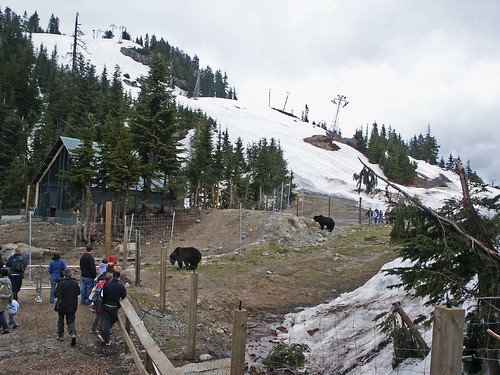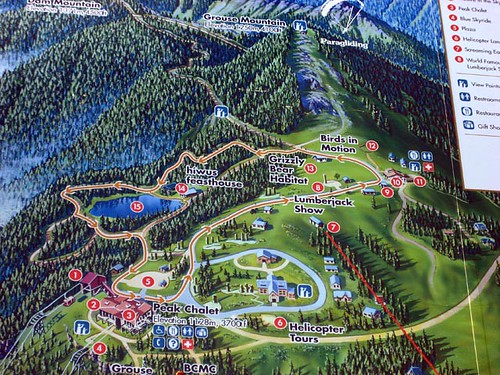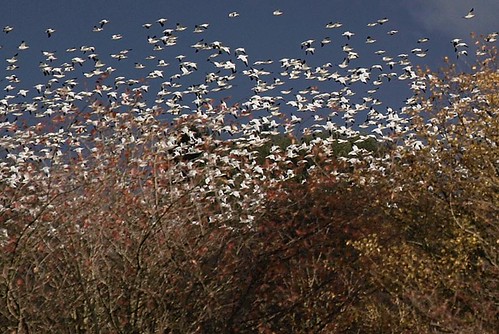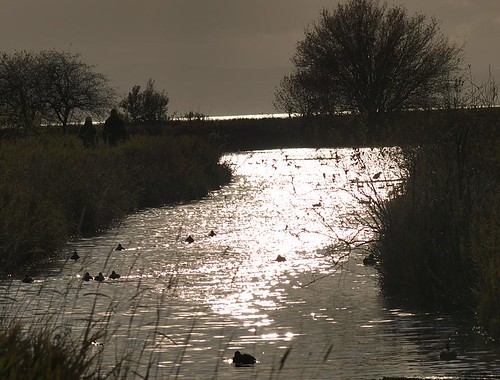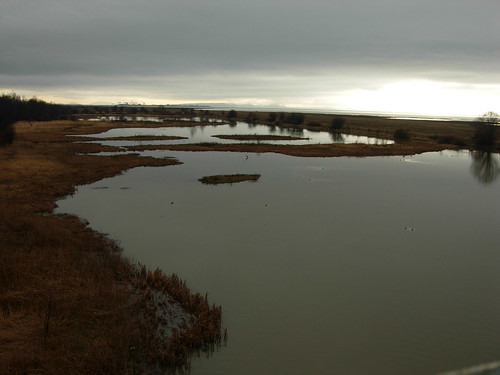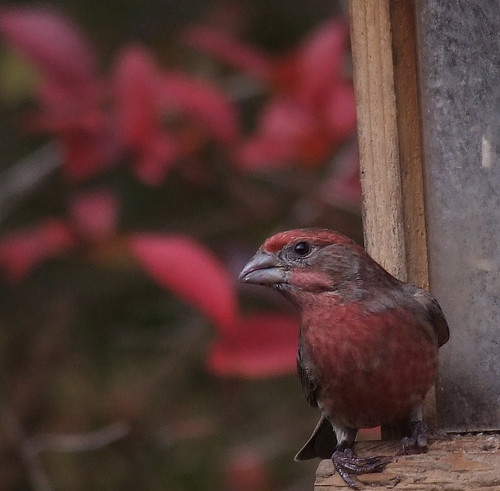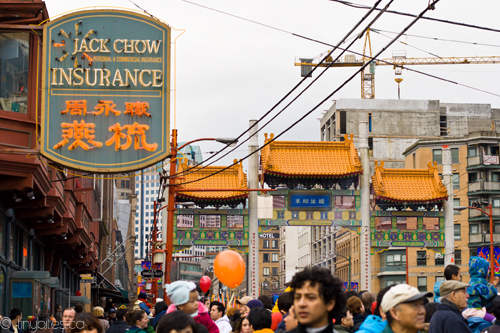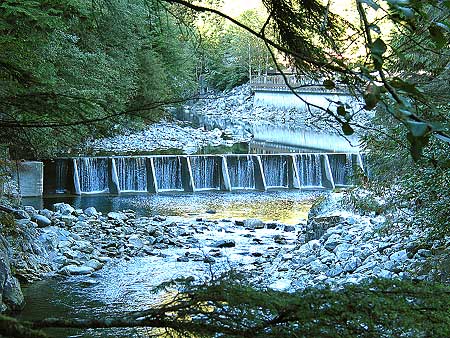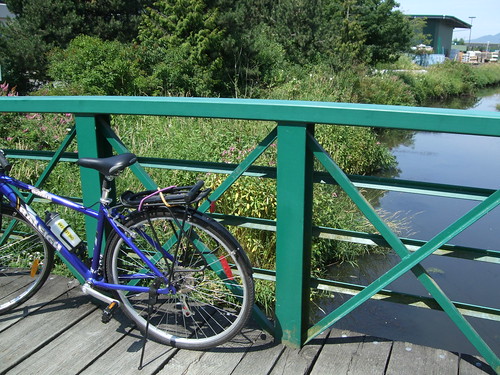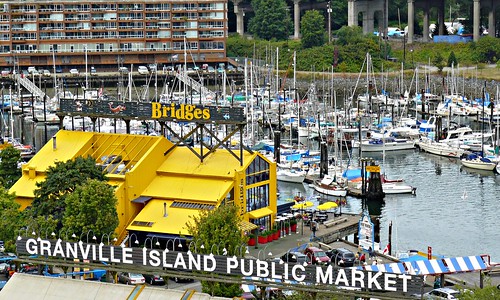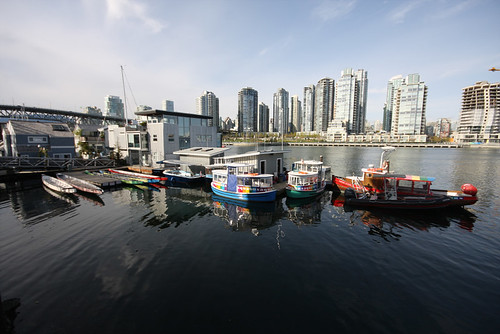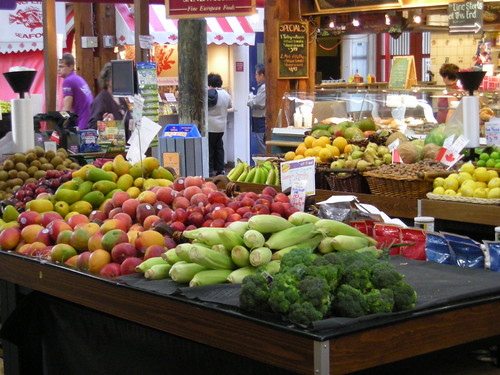Granville Island is a small island and shopping district in Vancouver, British Columbia, Canada. It is located in False Creek directly across from Downtown Vancouver's peninsula, under the south end of the Granville Street Bridge. The island is now more or less connected with the mainland so it is not technically an island.
Granville Island was once an industrial manufacturing area, but is now a major tourist destination, providing amenities such as a public market, a large marina, a hotel, the Emily Carr University of Art and Design (named in honour of the artist), various theatres including the Arts Club Theatre Company and Carousel Theatre, and various shopping areas clustered around the one industrial outpost remaining, a cement plant. The island is very popular with tourists and locals alike.
Passenger ferry service from Granville Island to Downtown Vancouver is provided by two ferry companies, False Creek Ferries and Aquabus.
Since its redevelopment in the 1970s, Granville Island has maintained a healthy community of craft studios, including a glassblowing studio, a printmaking shop, a luthier, a master shoemaker, various jewellers, and the B.C. Potter's Guild. A weekly farmer's market has also been ongoing since the island's redevelopment.
Granville Island Brewing Co. is also the name of a beer company which originated on Granville Island in 1984, but whose main base of operations was moved to Kelowna, British Columbia some time later. It does continue, however, to brew some of its varieties at the original site, and offers beer-tasting tours.
In 2004, Project for Public Spaces named Granville Island "One of the World's Great Places". [1]
History
The city of Vancouver was once called Granville until it was renamed in 1886, but the former name was kept and given to Granville Street, which spanned the small inlet known as False Creek. False Creek in the late 19th century was more than twice the size it is today, and its tidal flats included two sandbars over which spanned the original, rickety, wooden Granville Street bridge. Those two sandbars would eventually become Granville Island.
In 1915, with the port of Vancouver growing, the newly formed Vancouver Harbour Commission approved a reclamation project in False Creek for an industrial area. A 35 acres (14.2 ha) island, connected to the mainland by a combined road and rail bridge at its south end, was to be built. Almost 1 million cubic yards (760,000 m³) of fill was dredged from the surrounding waters of False Creek to create the island under the Granville Street Bridge. The total cost for the reclamation was $342,000. It was originally called Industrial Island, but Granville Island was the name that stuck, named after the bridge that ran directly overhead.

North-west Granville Island in 1922. Many of the buildings shown here are still standing as of 2006.
The very first tenant, B.C. Equipment Ltd., set the standard by building a wood-framed machine shop, clad on all sides in corrugated tin, at the Island's west end. (Today the same structure houses part of the Granville Island Public Market.) By 1923 virtually every lot on the Island was occupied, mostly by similar corrugated-tin factories. The first tenants of Granville Island tended toward newer, secondary industries serving the forest, mining, construction, and shipping sectors. Factories made roof shingles, chain, barrels, wire rope, nails, saws, paint, cement, rivets, boilers, and many types of industrial machinery. In 1930, 1,200 workers were employed on the island mostly arriving at work by streetcar. There was a special stop in the middle of the Granville Street Bridge where they descended several flights of stairs to the Island below. The only other access to the Island was a pair of road and rail bridges leading to the Creek's south shore.
During the Great Depression, one of Vancouver's several hobo jungles sprang up on the False Creek flats opposite Granville Island's north shore.[2] "Shackers" lived on the island, in town, or in floathouses, and survived by fishing and beachcombing and sold salmon, smelt, and wood door to door or at the public market on Main Street.[3] They were basically self-sufficient and were left alone.
The Depression saw several sawmills around False Creek shut down, yet secondary industries on Granville Island survived. They successfully lobbied the overseers to lower their rents, and withheld civic taxes on the grounds that the city had no jurisdiction over federal property. The ensuing court case went all the way the House of Lords in London (then the highest court of appeal). The tenants lost, but Europe, being at war, depended on the industrial factories on Granville Island. The island was considered so vital to the war effort that in 1942, after the Japanese attack on Pearl Harbor, special identification cards were issued to workers to prevent saboteurs from infiltrating it.

Granville Island and Granville Street Bridge as seen from western False Creek
In 1949 city officials gave eviction notices to seven hundred people when a typhoid scare and a grisly murder prompted the city to remove the shantytown.
In the postwar period, demand for heavy industrial output declined. The sawmills and even the Island's factories were becoming oily, dirty firetraps. Factories routinely discharged waste and other pollutants directly into the surrounding water. To keep its tenants, the overseers charged some of the lowest industrial rents going, which meant the declining businesses hung on, and no newer, tertiary industries took their place.
As business declined, officials began entertaining a new reclamation plan. The idea was to fill in the remainder of the Creek to create more industrial land, remove the water access (on which many of the existing factories still depended), and turn Granville Island into a land-locked plot. The Creek was saved by the hefty $50-million price tag estimated to fulfill the reclamation plan. Just 6 acres (24,000 m2) were reclaimed from the Creek along the Island's south channel. It was technically no longer an island but instead a peninsula.
In 1950, plans also started for the construction of a soaring, new, eight-lane Granville Street Bridge to replace the 1909 swing span that still stopped traffic every time a larger vessel passed underneath.
The island was in serious decline as fire struck factory after factory. Rather than rebuild, owners either relocated or left industry alltogeter. Trucks replaced barges and trains as the main means of transportation, and the Island's cramped, inner-city location no longer looked attractive to industry. Slowly, the vacant lots began to outnumber the occupied ones.
In the 1970s, the site was redeveloped by the federal government, spearheaded by Canadian government minister Ron Basford. It transformed the site into a 'people-friendly' place with various uses, from parkland to housing to public exhibition space. Today, the site is still owned and managed by the government through the Canada Mortgage and Housing Corporation agency. The redevelopment originally cost the government $19 million and the site now generates an estimated $35 million per year in taxes.
Buskers
Granville Island plays host to a variety of buskers throughout the year. Busking is encouraged by the Granville Island administration, and a group has been created to oversee the activity. Performers must purchase a license prior to busking, and are restricted to specific areas of the island. As of 2007, approximately 100 performers are registered to busk, including musicians, jugglers, magicians and other street performers. Buskers can be found most of the day at two main outdoor locations. One being the triangle square in front of the La Baguette Bakery, and the other being the Market Courtyard behind the public market on the waterfront. Unamplified buskers can also be found at various indoor and outdoor locations throughout the island. Performances take place year-round with the majority taking place during the busy tourist season (May-September).
Public market
Over one hundred permanent and temporary vendors sell a variety of food and crafts in the market buildings. Hours of operation are 9:00am to 7:00pm, seven days per week, except Christmas and New Years.
 Dogs at Quarry Rock
Dogs at Quarry Rock





